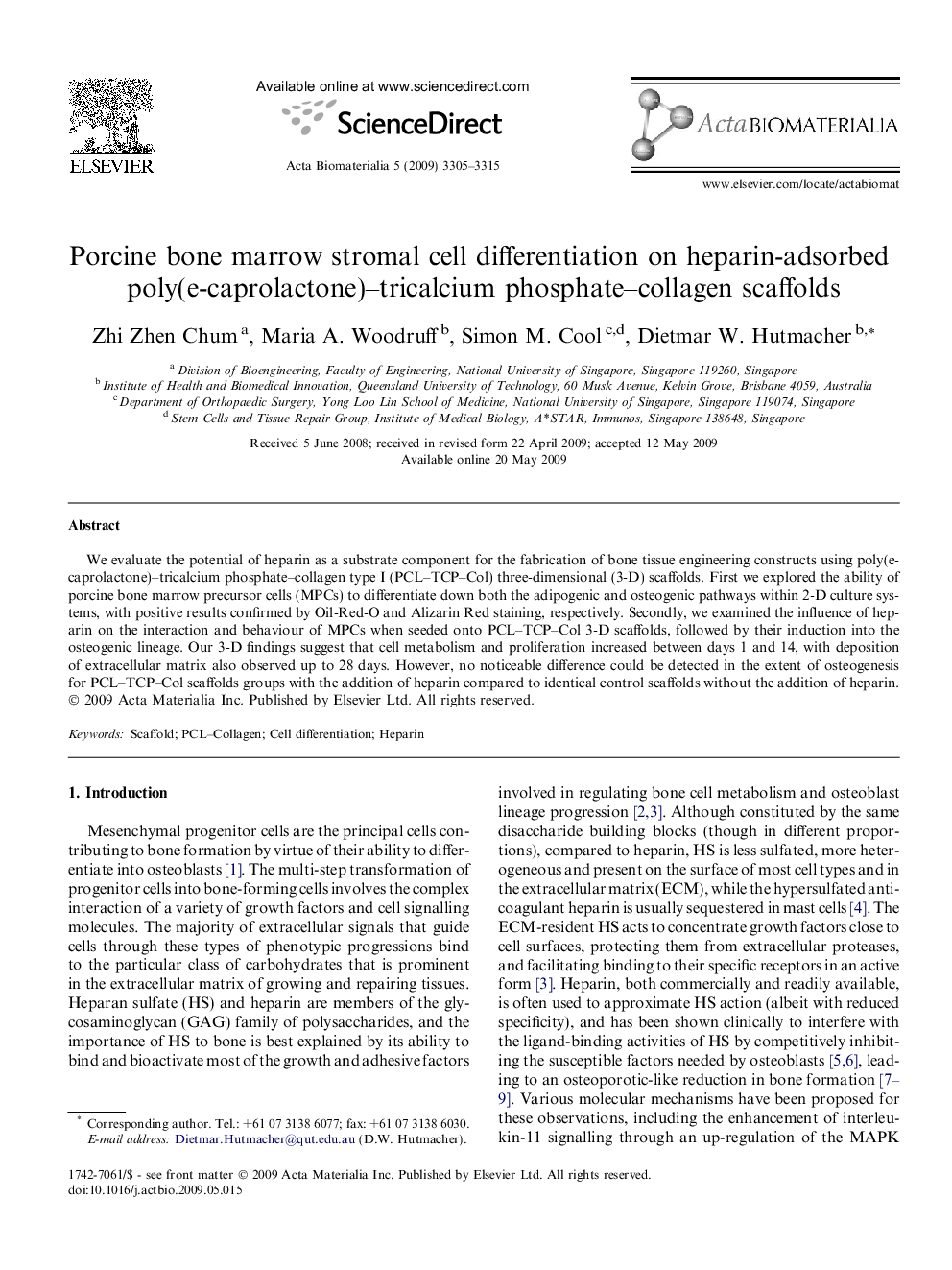| Article ID | Journal | Published Year | Pages | File Type |
|---|---|---|---|---|
| 1859 | Acta Biomaterialia | 2009 | 11 Pages |
We evaluate the potential of heparin as a substrate component for the fabrication of bone tissue engineering constructs using poly(e-caprolactone)–tricalcium phosphate–collagen type I (PCL–TCP–Col) three-dimensional (3-D) scaffolds. First we explored the ability of porcine bone marrow precursor cells (MPCs) to differentiate down both the adipogenic and osteogenic pathways within 2-D culture systems, with positive results confirmed by Oil-Red-O and Alizarin Red staining, respectively. Secondly, we examined the influence of heparin on the interaction and behaviour of MPCs when seeded onto PCL–TCP–Col 3-D scaffolds, followed by their induction into the osteogenic lineage. Our 3-D findings suggest that cell metabolism and proliferation increased between days 1 and 14, with deposition of extracellular matrix also observed up to 28 days. However, no noticeable difference could be detected in the extent of osteogenesis for PCL–TCP–Col scaffolds groups with the addition of heparin compared to identical control scaffolds without the addition of heparin.
